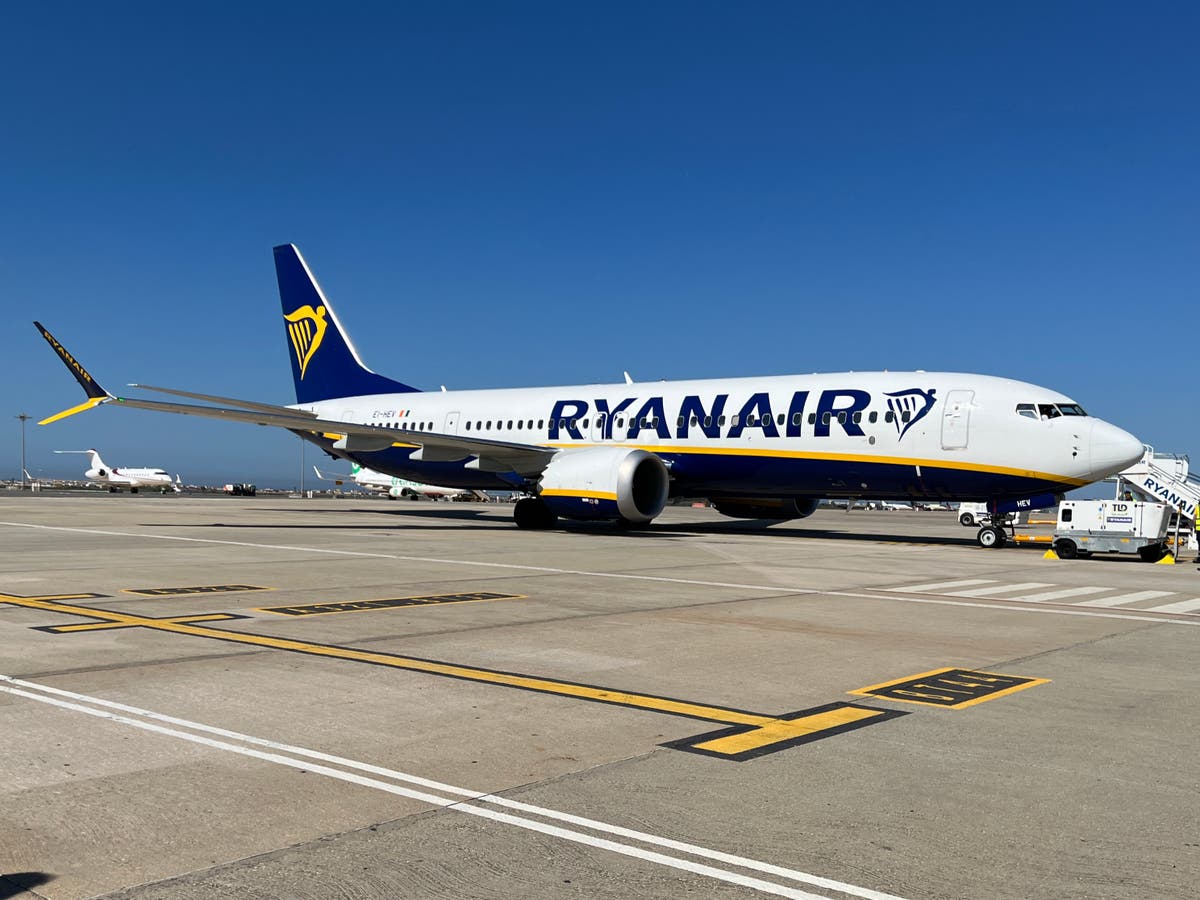Flight tax cut sparks surge in new UK domestic flights
Air Passenger Duty for internal links will be cut from £13 to £6.50 on 1 April

Sign up to Simon Calder’s free travel email for expert advice and money-saving discounts
Get Simon Calder’s Travel email
Crisis, what aviation crisis? For the airline industry, the last weekend in March marks the start of the summer season: traditionally the time when new routes are launched.
Three years ago the vast majority of flights had been grounded at the start of the Covid pandemic, with airports silent and fears of widespread bankruptcies among carriers.
Yet with the surge of post-lockdown demand unabated, this year will see 150 new and restored air routes from and within the UK between late March and the end of June – including a wide range of new domestic air routes on Ryanair.
The budget airline is expanding its network linking England, Wales, Scotland and Northern Ireland because of the impending cut in the tax on domestic flights.
Chief executive Michael O’Leary said: “The halving of APD [Air Passenger Duty] on domestic flights from April 2023 has allowed Ryanair to add more domestic routes to our UK schedule.”
On Saturday 1 April, Air Passenger Duty on flights within the UK will fall from £13 to £6.50. But the additional flights and incentive to move from rail to air has caused dismay among transport campaigners and environmentalists who believe there is too much flying already.
What’s happening?
Millions of airline passengers are set to benefit from a cut in the tax on flying for trips within the UK. From the start of April, Air Passenger Duty on domestic flights is to be halved.
The decision was announced by Rishi Sunak while he was chancellor. Ministers say the aim is “to further bolster links within the UK” and that a corresponding increase in tax for very long flights “aligns Air Passenger Duty more closely with the government’s environmental objectives”.
At the time, Mr Sunak said the aim was to remove the “double-taxation” for people for flying domestic return trips. When Air Passenger Duty was first introduced in 1995, it was levied only on one leg of a round trip within the UK.
Overall, passengers will collectively benefit to the tune of £58m in tax each year that the government is giving up.
But transport and environment campaigners are outraged, saying it will encourage a switch from rail to air – just when the move should be in the opposite direction.
What’s the likely effect of the cut in tax?
When air fares fall, more people fly. Some will make extra journeys while others will switch to air from terrestrial transport, whether that is rail, road or sea. The main beneficiaries will be passengers flying between Edinburgh and London, the key intercity link in the UK.
British Airways, easyJet and Ryanair are expecting an increase in demand as passengers move from the train to the plane.
More broadly, travellers from Scotland and Northern Ireland heading for England and Wales, or vice versa, will see lower fares and more choice.
People who won’t notice any difference are those on Public Service Obligation routes such as Stansted to City of Derry and London City to Dundee, as well as under-16s, who don’t pay any tax. And anyone beginning a journey of any length from Inverness in northern Scotland also avoids Air Passenger Duty.
Are there new domestic routes?
Yes. As tax on flying falls, airlines are incentivised to launch new routes. Ryanair – Europe’s biggest budget airline – is hugely expanding its UK domestic network because of the tax cut, with seven new links including Edinburgh to Bournemouth, Belfast International to Cardiff and London Stansted to Newquay. The Cornish airport is also the target of Eastern Airways, with a link from East Midlands, and Aer Lingus – which will be flying down from Belfast City.
While a link from Belfast City to Newquay is an example of a very quick flight replacing a very long journey by sea and land, the tax cut will primarily benefit domestic passengers on routes with loads of alternatives, primarily between Edinburgh and London.
Who’s objecting?
Many campaigners. Anna Hughes, Director of Flight Free UK, said: “It’s hard to see how an increase in flights is in line with the government’s environmental objectives. Making air travel cheaper – already a significantly under-taxed form of transport – will only encourage people to take more flights.
“We have just had the clearest warning yet from the IPCC [Intergovernmental Panel on Climate Change] that emissions need to be brought down rapidly and urgently across all sectors, and that includes aviation.
“Investing that £58m on improved, affordable rail services would be a game-changer for low-carbon travel in the UK. Instead, the government has squandered it in favour of encouraging more people to fly between London and Edinburgh – already the busiest flight route in Britain, and one that is well connected by train.”
Mark Smith, the international rail guru who runs the Seat61.com website, says: “This makes a mockery of the government’s environmental credentials. It almost looks as if they want us to switch from rail to air.
“Airlines pay no duty on aviation fuel, so they already receive a huge hidden subsidy. And as short-haul flights are the ones most easily replaceable with a train ride, it makes no sense to lower tax on these whilst raising it on longer-distance flights where there are fewer alternatives other than not to travel.”
What is happening with long-haul flights?
A new higher-tax band applies for flights to countries whose capitals are over 5,500 miles from London. That includes the key Asian hubs of Bangkok, Hong Kong. Kuala Lumpur and Singapore. Anyone sitting in anything better than basic economy will pay £200 to leave the UK – that means £1,000 for a family of five in premium economy to get to Egypt or Florida. For Scottish travellers, there will be a strong incentive to begin such journeys from Inverness rather than Glasgow, Edinburgh or Aberdeen.
For people who are intent on flying, what are the most interesting new air links?
London Gatwick has plenty: four Indian cities, including Kochi and Goa; a new South American destination, Georgetown in Guyana; Prestwick in southwest Scotland to Marseille and Pisa; Bristol to Enfidha in Tunisia; and London Stansted to Vigo in northwest Spain.

 Hollif
Hollif 































